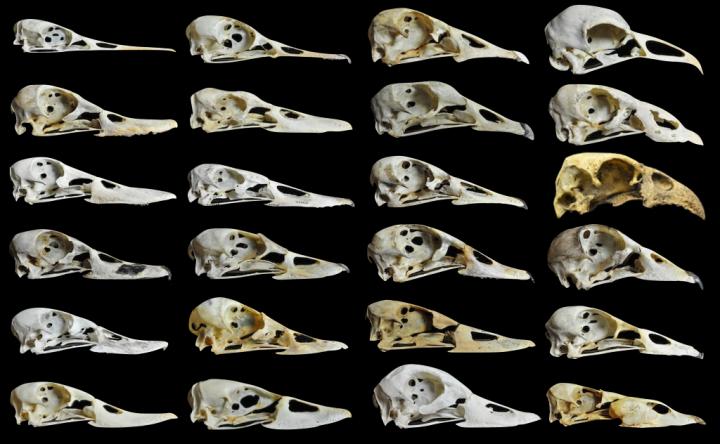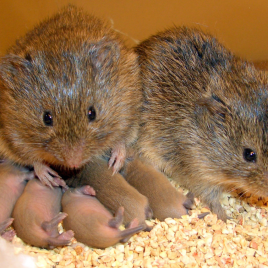
Waterfowl beaks vary along a duck-to-goose gradient (left to right), primarily because of differences in diet.
(Image by Aaron Olsen)
A new study provides the most comprehensive look at the evolution of beaks in waterfowl to date. Following Charles Darwin’s famous finch study, present research suggests that diet shaped the beaks of geese and ducks. Study author studied 3D form of the beaks of 136 specimens of waterfowl, covering 51 species and 46 genera, including two extinct species and a fossil dating back tens of millions of years. His findings suggest a strong correlation between diet and beak shape, and also put forward a theory that goose-shaped beaks are a newer phenomenon, meaning ancient waterfowl were more duck-like. Ducks, which primarily filter-feed little bugs and seeds from the water, have relatively long, wide-tipped bills for bringing in water. Geese, which evolved to prefer the leaves and roots of plants over filter feeding, have shorter, narrower beaks that give the birds a more forceful bite.
Corresponding author:
Aaron Olsen, Department of Ecology and Evolutionary Biology, Brown University, Providence, RI, US, Email: aaron_olsen@brown.edu
Original paper published in Functional Ecology on May 30, 2017.


